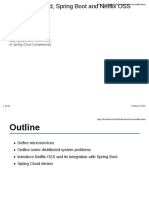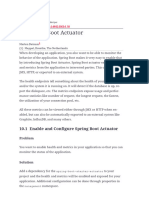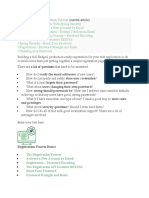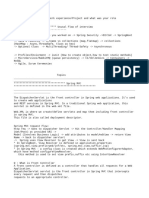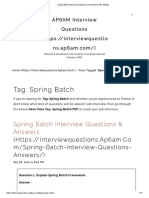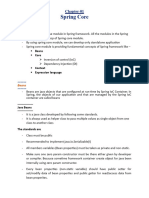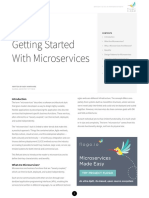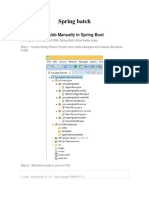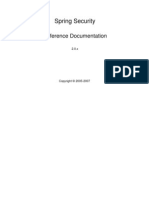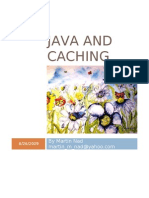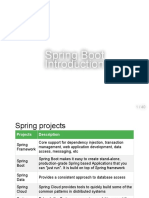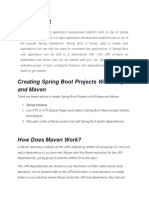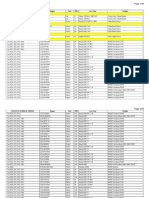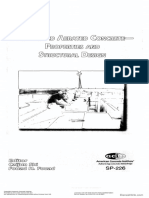0% found this document useful (0 votes)
326 views25 pagesSpringapplication Springbootapplication: Import I Mport
The document discusses various aspects of building applications with Spring Boot including:
- Configuring the main application class with annotations like @SpringBootApplication
- Setting up REST endpoints using annotations like @RestController and @RequestMapping
- Loading configuration properties from files like application.properties
- Building RESTful web services to perform CRUD operations
- Handling exceptions globally using @ControllerAdvice and specific exceptions using @ExceptionHandler
Uploaded by
ayushCopyright
© © All Rights Reserved
We take content rights seriously. If you suspect this is your content, claim it here.
Available Formats
Download as DOC, PDF, TXT or read online on Scribd
0% found this document useful (0 votes)
326 views25 pagesSpringapplication Springbootapplication: Import I Mport
The document discusses various aspects of building applications with Spring Boot including:
- Configuring the main application class with annotations like @SpringBootApplication
- Setting up REST endpoints using annotations like @RestController and @RequestMapping
- Loading configuration properties from files like application.properties
- Building RESTful web services to perform CRUD operations
- Handling exceptions globally using @ControllerAdvice and specific exceptions using @ExceptionHandler
Uploaded by
ayushCopyright
© © All Rights Reserved
We take content rights seriously. If you suspect this is your content, claim it here.
Available Formats
Download as DOC, PDF, TXT or read online on Scribd
/ 25

